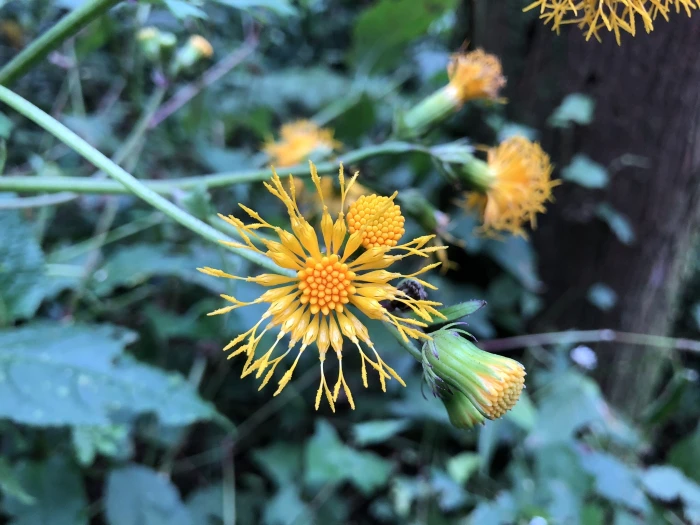Japanese Gynura
(Gynura japonica)
Japanese Gynura (Gynura japonica)
/
/

Cheng-Tao Lin
CC BY 4.0
Image By:
Cheng-Tao Lin
Recorded By:
Copyright:
CC BY 4.0
Copyright Notice:
Photo by: Cheng-Tao Lin | License Type: CC BY 4.0 | License URL: http://creativecommons.org/licenses/by/4.0/ | Rights Holder: Cheng-Tao Lin | Publisher: iNaturalist | Date Created: 2017-10-28T05:19:21Z |

























Estimated Native Range
Climate Requirements for Tuscaloosa, Alabama
| This Plant | Your Site | Plant Suitability for Your Location | ||
|---|---|---|---|---|
| • Precipitation | 11" - 172" | 57" | Aquatic | Aquatic |
| • High Temp. | 55°F - 94°F | 92°F | Your summer temperatures are normal for this plant. | Excellent |
| • Low Temp. | -4°F - 59°F | 33°F | Your winter temperatures are normal for this plant | Excellent |
This plant should grow very well at your location without additional irrigation.
Summary
Gynura japonica, commonly known as Japanese Gynura or Japanese Velvet Plant, is a semi-deciduous herb native to a range of habitats in East Asia, including forest margins, grassy slopes, and open woodlands. It typically grows at a moderate rate to a height of 1.5-3 feet (0.46-0.9 meters) and a width of 1-2 feet (0.3-0.6 meters). The plant is characterized by its velvety leaves and orange or yellow composite flowers that bloom in the summer, adding a splash of color to the garden. The flowers are somewhat showy due to their bright coloration.
Japanese Gynura is valued for its unique foliage texture and vibrant flowers. It is often used in border plantings, as a ground cover, or in container gardens. The plant prefers part shade to full shade, which makes it suitable for understory plantings and shaded garden areas. It thrives in medium draining loam or clay soils and requires medium amounts of water, making it relatively easy to maintain. While not commonly reported, it can occasionally suffer from pests such as aphids or spider mites.CC BY-SA 4.0
Japanese Gynura is valued for its unique foliage texture and vibrant flowers. It is often used in border plantings, as a ground cover, or in container gardens. The plant prefers part shade to full shade, which makes it suitable for understory plantings and shaded garden areas. It thrives in medium draining loam or clay soils and requires medium amounts of water, making it relatively easy to maintain. While not commonly reported, it can occasionally suffer from pests such as aphids or spider mites.CC BY-SA 4.0
Plant Description
- Plant Type: Herb
- Height: 1.5-3 feet
- Width: 1-2 feet
- Growth Rate: Moderate
- Flower Color: Orange, Yellow
- Flowering Season: Summer
- Leaf Retention: Semi-deciduous
Growth Requirements
- Sun: Part Shade, Full Shade
- Water: Medium
- Drainage: Medium
Common Uses
Butterfly Garden, Low Maintenance, Potted Plant
Natural Habitat
Forest margins, grassy slopes, and open woodlands in East Asia
Other Names
Common Names: Japanese Gynura, Japanese Velvet Plant
Scientific Names: Gynura japonica, Arnica japonica, Cacalia pinnatifida, Cacalia segetum, Doronicum japonicum, Gynura aurita, Gynura flava, Gynura japonica, Gynura japonica subsp. flava
GBIF Accepted Name: Gynura japonica